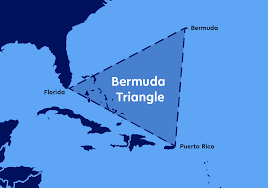The maritime industry is full of engineering marvels, and among its most awe-inspiring creations is the VLCC ship. VLCC stands for Very Large Crude Carrier, a type of oil tanker designed to transport vast quantities of crude oil across the world’s oceans. These vessels are essential to the global oil trade, playing a pivotal role in ensuring that energy needs are met across continents. With their immense size, technological sophistication, and strategic importance, VLCCs represent one of the most vital assets in the shipping industry.
What is a VLCC Ship?
A Very Large Crude Carrier (VLCC) is a class of oil tanker with a deadweight tonnage (DWT) ranging between 200,000 and 320,000 metric tons. These ships are specifically built for long-haul transport of crude oil from oil-producing regions like the Middle East, West Africa, and South America to high-demand markets in North America, Europe, and Asia.
VLCCs are part of a larger classification of oil tankers which include:
-
Aframax (80,000–120,000 DWT)
-
Suezmax (120,000–200,000 DWT)
-
VLCC (200,000–320,000 DWT)
-
ULCC (Ultra Large Crude Carrier, over 320,000 DWT)
Among these, VLCCs are the most commonly used for intercontinental crude transport, striking a balance between size, operational flexibility, and cost-efficiency.
Physical Dimensions and Features
VLCCs are among the largest ships in the world. Typical dimensions of a VLCC include:
-
Length: Approximately 330 meters (1,082 feet)
-
Beam (Width): Around 60 meters (197 feet)
-
Draft: About 20 meters (65 feet)
-
Speed: 15–16 knots (approx. 28–30 km/h)
Due to their immense size, VLCCs are restricted to deep-water ports with specific facilities that can accommodate their length and draft. They are often anchored offshore where oil terminals and floating storage units assist with cargo transfer.
Cargo Capacity
A VLCC can carry up to 2 million barrels of crude oil in a single voyage. To put that into perspective, one barrel contains 159 liters of oil, so a single VLCC may transport around 318 million liters of oil. This immense capacity makes them highly cost-effective for long-distance oil transportation.
These ships are equipped with multiple tanks and sophisticated pumping systems that ensure quick and safe loading and unloading of oil. The tanks are also equipped with inert gas systems to prevent explosions, as crude oil vapors are highly flammable.
Routes and Operational Range
VLCCs typically operate on long-distance routes such as:
-
Persian Gulf to China or India
-
West Africa to the United States
-
South America to Europe
Because of their size, many VLCCs cannot pass through the Panama Canal or the older locks of the Suez Canal. Instead, they take longer routes or offload some cargo onto smaller ships (a process known as lightering) to reduce draft before entering certain ports.
With the 2015 expansion of the Suez Canal, more VLCCs are now able to transit partially loaded or via the Suezmax route, increasing their operational range and efficiency.
Economic Importance
The global oil industry relies heavily on VLCCs. These ships make the large-scale transport of crude oil economically viable, reducing the cost per barrel transported. VLCC freight rates, which are often quoted in Worldscale points, are closely watched indicators in the oil and shipping markets. These rates fluctuate based on oil demand, seasonal trends, and geopolitical events.
The economic viability of a VLCC voyage depends on several factors including:
-
Oil prices
-
Bunker fuel costs
-
Port charges
-
Freight rates
-
Weather and route conditions
Environmental and Safety Concerns
While VLCCs are indispensable, they also pose significant environmental and safety risks:
-
Oil Spills: Accidents involving VLCCs can lead to catastrophic oil spills, affecting marine life and coastal ecosystems.
-
Air Pollution: These ships use heavy fuel oil, a major source of sulfur and carbon emissions.
-
Ballast Water Discharge: VLCCs take in seawater as ballast which may carry invasive species from one region to another.
To address these concerns, the International Maritime Organization (IMO) has implemented regulations such as:
-
MARPOL Convention (to prevent marine pollution)
-
Ballast Water Management Convention
-
IMO 2020 Sulphur Cap, which limits sulfur content in fuel to 0.5%
Additionally, modern VLCCs are being designed with double hulls, improved navigation systems, and cleaner propulsion technologies to enhance environmental safety.
VLCC vs. ULCC
The ULCC (Ultra Large Crude Carrier) is even larger than the VLCC, with a capacity exceeding 320,000 DWT. However, ULCCs are much less common due to their limited port accessibility and operational inflexibility. VLCCs remain the preferred choice for most operators due to their optimal balance of size and maneuverability.
Famous VLCC Ships
Some notable VLCCs include:
-
TI Class Supertankers: Originally built as ULCCs, these were later converted into VLCCs or FSOs (Floating Storage and Offloading units).
-
Knock Nevis: Formerly the largest ship ever built, classified as a ULCC but often associated with VLCC discussions due to its legendary status.
-
Euronav’s Nauticor-class VLCCs: Modern, fuel-efficient vessels meeting the latest IMO standards.
Future of VLCCs
The future of VLCCs is likely to be shaped by evolving environmental regulations, digitalization, and fuel innovations. With increasing pressure to reduce carbon footprints, shipping companies are exploring:
-
LNG-powered VLCCs
-
Wind-assisted propulsion
-
Autonomous navigation
-
Carbon capture technologies
Furthermore, geopolitical shifts and global energy transitions may influence VLCC demand. While crude oil remains essential today, the rise of renewable energy may eventually change the landscape of oil transport.
Conclusion
VLCCs are true giants of the ocean, transporting the lifeblood of the modern industrial world—crude oil. Their massive size, intricate design, and crucial role in global trade make them both fascinating and indispensable. As the maritime world embraces greener technologies and smarter logistics, the VLCC will continue to evolve, remaining a key player in the global supply chain for decades to come.
